Yoga and meditation are more than just activities; they are gateways to profound tranquility and builders of inner peace. In a world filled with constant bustle and noise, these age-old practices provide a sanctuary of stillness and serenity. This blog post delves into the undeniable benefits of yoga and meditation as tools for anyone looking to cultivate calm and escape the cacophony of daily life. Discover how incorporating these practices can improve your mental clarity, emotional stability, and overall well-being. Step into the world of yoga and meditation to discover the ultimate peace that exists within you.
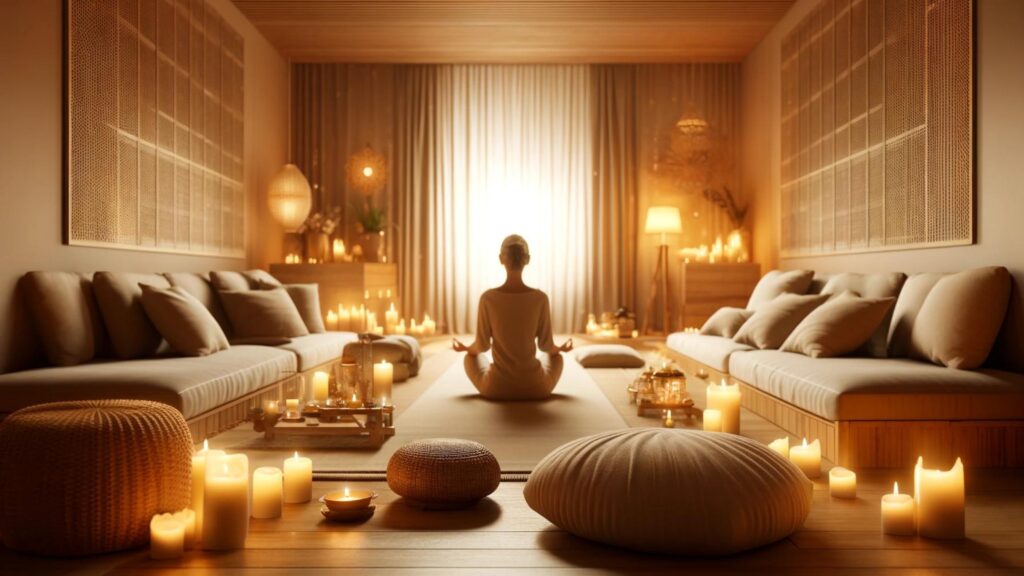
- An Introduction to Yoga and Meditation
- Yoga and Meditation: Definitions and Key Concepts
- Yoga and Meditation's Historical Origins
- The philosophical foundations of yoga and meditation practices
- Yoga and meditation are becoming increasingly popular worldwide.
- Yoga and Meditation: Key Differences and Synergies
- The Science of Yoga and Meditation: Understanding the Benefits
- Debunking Myths about Yoga and Meditation
- Yoga and Meditation: One Day in the Life of a Practitioner
- The physical and psychological benefits of yoga and meditation
- Anatomy of a Yoga Pose: How Yoga and Meditation Affect the Body
- Breathing techniques for yoga and meditation
- Alignment and Posture: The Basis for Effective Yoga and Meditation
- The effects of yoga and meditation on anxiety and depression
- Mindfulness is the psychological core of yoga and meditation.
- The intersection of yoga, meditation, and modern psychology
- Yoga and meditation are part of the rehabilitation programs.
- Emotional regulation through yoga and meditation
- Yoga and Meditation: Spiritual and Cultural Aspects
- Exploring the Spiritual Journey with Yoga and Meditation
- Yoga and meditation's spiritual goals are connection and unity.
- Yoga and Meditation have cultural implications.
- The intersection of yoga, meditation, and major world religions
- Yoga and Meditation: Chakras and Energy Flow
- The yoga and meditation practices of renowned spiritual leaders
- Ethical and philosophical concerns with commercial yoga and meditation
- Yoga and Meditation Retreats: An Escape to Find Inner Peace
- Lifestyle Integration: Practical Guides
- Yoga and Meditation: A Beginner's Guide
- This article discusses the importance of nutrition and diet for effective yoga and meditation practices.
- Creating a conducive environment for yoga and meditation at home
- Integrating Yoga and Meditation into Your Daily Routine
- Advanced Yoga and Meditation Techniques for Experienced Practitioners
- Online resources and communities for Yoga and Meditation
- Ecotherapy and nature meditation
- Yoga and Meditation's Community and Social Implications
- Demographic Specifications and Accessibility
- Yoga and Meditation for Specific Demographics
- Adaptive Yoga and Meditation: Tailoring Practices to Every Body Type
- From flexibility to strength: Yoga and meditation for physical health
- Preventing and managing injuries in yoga and meditation practices
- The importance of physical space in yoga and meditation practices
- This article discusses legal issues and certification for yoga and meditation instructors.
- Yoga for Seniors, Professionals, and Other Target Populations
- How to Maintain Motivation and Consistency in Your Yoga and Meditation Practice
- Future Trends and Global Movements
- Innovations in Yoga and Meditation Practice
- Using Technology in Yoga and Meditation
- The increasing use of yoga and meditation in healthcare
- Global Movements and Campaigns for Yoga and Meditation
- Economic Impact of the Yoga and Meditation Industry
- Challenges and Criticisms for the Yoga and Meditation Community
- Predictions for the future of yoga and meditation
- How Yoga and Meditation Are Changing Modern Lifestyles
- Step-by-Step Guide to Yoga and Meditation: Achieve Ultimate Peace Today
- Step 1: Understand the Basics.
- Step 2: Prepare your space.
- Step 3: Select the Right Time
- Step 4: Start with basic postures.
- Step 5: Use breathing techniques.
- Step 6: Transition to Meditation.
- Step 7: Practice regularly.
- Step 8: Deepen your practice.
- Step 9: Practice mindfulness daily.
- Step ten: Join a community.
- Frequently Asked Questions: Yoga and Meditation—Unlocking Ultimate Peace Today
- 1. What are the main benefits of combining yoga and meditation?
- 2. How long should I practice yoga and meditation every day to see results?
- 3. Do I need any special equipment to start practicing yoga and meditation?
- 4. Do yoga and meditation help with anxiety and depression?
- 5. What is the best time of day for yoga and meditation?
- 6. Are there different types of yoga and meditation that are appropriate for beginners?
- 7. How do I keep my yoga and meditation sessions interesting?
- 8. What should I do if I have difficulty quieting my mind during meditation?
- 9. Are yoga and meditation safe for everyone?
- 10. How do yoga and meditation improve overall well-being?
- Conclusion
An Introduction to Yoga and Meditation
Yoga and Meditation: Definitions and Key Concepts
In the pursuit of spiritual and physical well-being, yoga and meditation often provide distinct paths to peace and health. Yoga, originating in ancient India, combines physical postures, breathing exercises, and meditation to promote overall health. Meditation, a practice that crosses cultural boundaries, entails techniques that promote concentration, emotional positivity, and a clear mind. These disciplines work together to balance the mind, body, and spirit, giving practitioners the tools they need to navigate the complexities of modern life.
Yoga and Meditation’s Historical Origins
Yoga and meditation have been at the heart of spiritual practice for thousands of years, dating back to ancient India. These practices were originally designed to deepen spiritual understanding and enlightenment but have evolved over millennia. The Rigveda first mentioned yoga, while Buddhist and Hindu traditions originated meditation. These ancient arts have spread worldwide, adapting to modern needs while maintaining their profound essence.
The philosophical foundations of yoga and meditation practices
Yoga and meditation are fundamentally philosophical practices with roots in several ancient Indian philosophical traditions, including Samkhya, Vedanta, and Yoga. Rich doctrines about the nature of the self and the universe embed these practices beyond mere physical exercises. They teach detachment from materialism and offer a path to spiritual liberation, emphasizing the interconnectedness of all life and the importance of living in harmony with nature.
Yoga and meditation are becoming increasingly popular worldwide.
Yoga and meditation have grown in popularity worldwide over the last few decades. Their broad appeal and adaptability have contributed to this surge in popularity. They provide stress relief and physical benefits in a fast-paced, interconnected world, attracting a diverse audience from various cultural backgrounds. The global wellness movement has pushed these ancient practices into mainstream health and lifestyle regimens.
Yoga and Meditation: Key Differences and Synergies
While both yoga and meditation aim to calm the mind and body, their methods and emphasis differ. Yoga frequently focuses on physical postures and breathing exercises to prepare the body for prolonged meditation, which improves physical fitness and flexibility. Meditation, on the other hand, focuses on the mind, with the goal of cultivating a deep, tranquil mental state that transcends physical activity. Together, they develop a comprehensive wellness practice that improves both overall health and mindfulness.
The Science of Yoga and Meditation: Understanding the Benefits
Scientific research has begun to shed light on the numerous benefits of yoga and meditation, demonstrating their effectiveness in improving both physical and mental health. Research has shown that regular practice can reduce cortisol levels, improve neurological function, and improve respiratory and cardiovascular health. Furthermore, studies have demonstrated their ability to alleviate symptoms of anxiety, depression, and chronic pain, thereby establishing them as crucial elements of preventive healthcare plans.
Debunking Myths about Yoga and Meditation
Despite their popularity, yoga and meditation are still subject to widespread misconceptions. Common misconceptions include the belief that they require a specific body type or level of flexibility, or that they are purely religious practices. However, these disciplines are inclusive and adaptable, appropriate for people of all ages and physical abilities, and can be practiced secularly or within various spiritual frameworks.
Yoga and Meditation: One Day in the Life of a Practitioner
Discipline and mindfulness characterize a yoga and meditation practitioner’s daily routine. It usually starts with morning stretches or a full yoga session to energize the body and focus the mind. Throughout the day, practitioners can take short meditation breaks to replenish mental energy and maintain emotional balance. To relax, the day could end with a reflective meditation or a gentle yoga sequence. This daily routine promotes a consistent sense of peace and well-being, demonstrating the profound impact of these practices in everyday life.
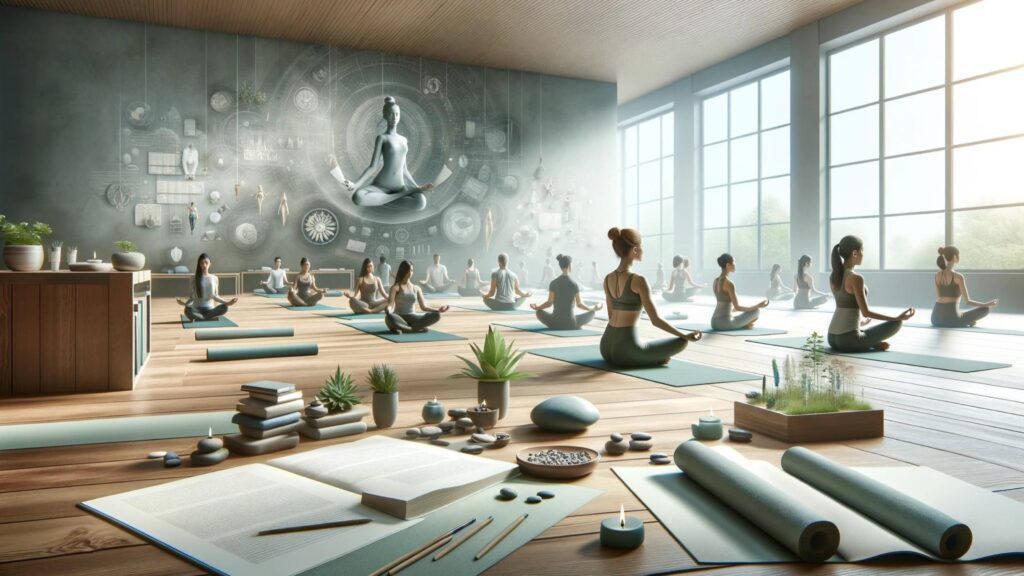
The physical and psychological benefits of yoga and meditation
Anatomy of a Yoga Pose: How Yoga and Meditation Affect the Body
Yoga poses engage specific muscle groups, joints, and tendons, thereby enhancing bodily functions. These postures, or asanas, boost blood flow, improve spinal alignment, and strengthen the nervous system. Beyond physical fitness, yoga’s anatomical impact includes improved digestive functions and hormonal balance, demonstrating that its benefits are both comprehensive and profound.
Breathing techniques for yoga and meditation
Pranayama, or controlled breathing, is at the heart of yoga and meditation practices. This discipline teaches how to modulate one’s breath to invigorate the body and relax the mind. Ujjayi, Anulom Vilom, and Kapalbhati are techniques that not only oxygenate the blood but also cleanse the energy channels, promoting a sense of calm and mental clarity.
Alignment and Posture: The Basis for Effective Yoga and Meditation
Yoga requires proper alignment and posture to avoid injury and maximize the physical benefits of each pose. This foundation promotes meditative practice by allowing for a smoother flow of prana (life energy), which improves focus and mental stability. A well-aligned posture thus acts as a conduit for balancing the physical and ethereal aspects of the body.
The effects of yoga and meditation on anxiety and depression
Studies have shown that yoga and meditation significantly reduce the symptoms of anxiety and depression. These practices reduce stress hormones such as cortisol and adrenaline, promoting a state of calm and contentment. Regular practice develops mental resilience, allowing people to maintain emotional stability in the face of life’s challenges.
Mindfulness is the psychological core of yoga and meditation.
Mindfulness is the psychological foundation of yoga and meditation. It requires a keen awareness of the present moment, encouraging practitioners to observe their thoughts and feelings without judgment. This mindfulness leads to a deeper understanding of oneself as well as a reduction in stress, thereby improving overall life satisfaction and emotional well-being.
The intersection of yoga, meditation, and modern psychology
Modern psychology uses yoga and meditation techniques to treat a wide range of mental health issues, from everyday stress to more complex psychological conditions. Cognitive behavioral therapy (CBT), for example, frequently includes mindfulness exercises derived from meditation to assist patients in challenging distorted cognitions and changing destructive patterns of behavior.
Yoga and meditation are part of the rehabilitation programs.
Rehabilitation programs are increasingly using yoga and meditation to help people recover and improve their quality of life after suffering from addiction, trauma, or physical injury. These practices help to develop self-control and body awareness, which are essential for both physical and emotional healing.
Emotional regulation through yoga and meditation
Yoga and meditation are important for emotional regulation, as they provide tools for better managing stress, anger, and sadness. Individuals who consistently practice these disciplines learn to detach from their immediate emotional reactions and develop a deeper, more measured approach to dealing with life’s ups and downs. This emotional regulation is critical for maintaining mental health and developing long-lasting personal and professional relationships.
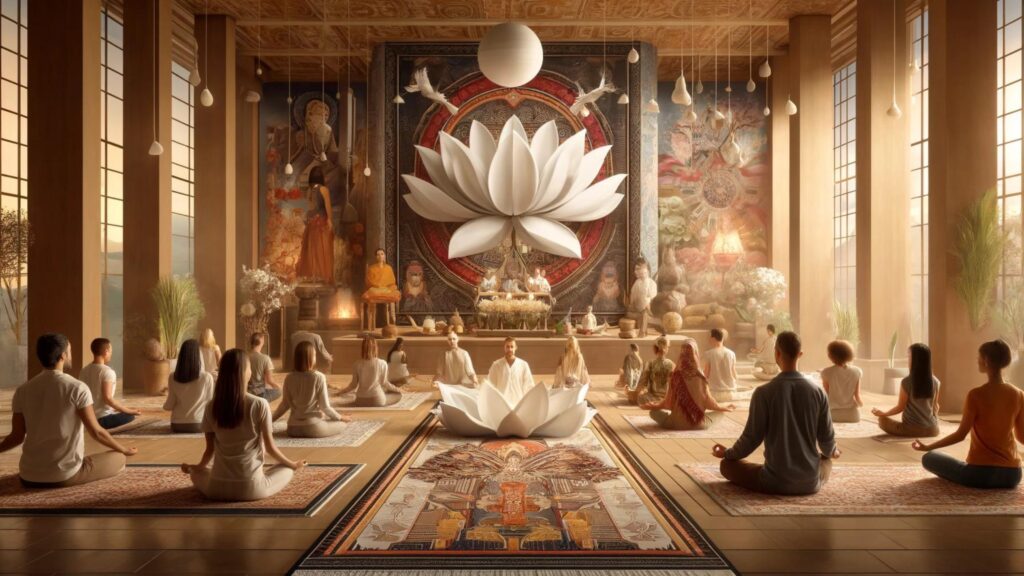
Yoga and Meditation: Spiritual and Cultural Aspects
Exploring the Spiritual Journey with Yoga and Meditation
Yoga and meditation act as gateways to spiritual exploration, offering paths to self-discovery and transcendence of the ordinary. These practices encourage a deeper connection with oneself and the universe, allowing practitioners to explore the various layers of their consciousness. This journey frequently results in profound insights and heightened awareness, culminating in what many refer to as enlightenment or ultimate peace.
Yoga and meditation’s spiritual goals are connection and unity.
The fundamental spiritual principles of yoga and meditation revolve around the concepts of connection and unity. These practices teach the dissolution of perceived boundaries between the individual and the universe, fostering a sense of unity with all beings. This spiritual unity promotes a sense of community and empathy, reinforcing life’s interconnectedness.
Yoga and Meditation have cultural implications.
Yoga and meditation have had a significant cultural impact, influencing health, wellness, and spiritual practices around the world. These disciplines, which originated in the East, have spread across borders and influenced Western societies’ attitudes toward health and spirituality. Their adaptability and versatility have led them to evolve into cultural phenomena, blending traditions and modern practices, and garnering worldwide acceptance.
The intersection of yoga, meditation, and major world religions
Yoga and meditation have significant overlaps with various world religions, seamlessly integrating into spiritual practices and rituals. Hinduism views yoga as a tool for spiritual growth and enlightenment. Meditation is a Buddhist practice that helps people gain clarity and insight. Christians also use meditation techniques for contemplation and connecting with the divine.
Yoga and Meditation: Chakras and Energy Flow
The concept of chakras, or energy centers within the human body, is essential for understanding how yoga and meditation affect spiritual and physical well-being. People believe that these practices activate and balance the chakras, enhancing energy flow and fostering health, vitality, and spiritual awakening.
The yoga and meditation practices of renowned spiritual leaders
Many spiritual leaders have promoted yoga and meditation, using them as tools for spiritual teaching and personal growth. Swami Vivekananda, Maharishi Mahesh Yogi, and modern-day gurus like Sadhguru popularized these disciplines around the world, each adding their own interpretations and methods to the practices, enriching the global tapestry of spiritual exploration.
Ethical and philosophical concerns with commercial yoga and meditation
Yoga and meditation have become increasingly popular, but they have not been without controversy, particularly in terms of commercialization. The balance between preserving the purity of these spiritual practices and making them available to a larger audience has sparked debate. This commercial aspect raises concerns about the diluted nature of traditional practices and the ethics of profiting from ancient knowledge.
Yoga and Meditation Retreats: An Escape to Find Inner Peace
Yoga and meditation retreats provide sanctuaries for people looking to deepen their practice in peaceful settings away from the distractions of everyday life. These retreats offer immersive experiences that combine natural beauty with intensive practice, resulting in significant spiritual growth and inner peace. They are watershed moments for many practitioners, representing significant shifts in their spiritual journeys.
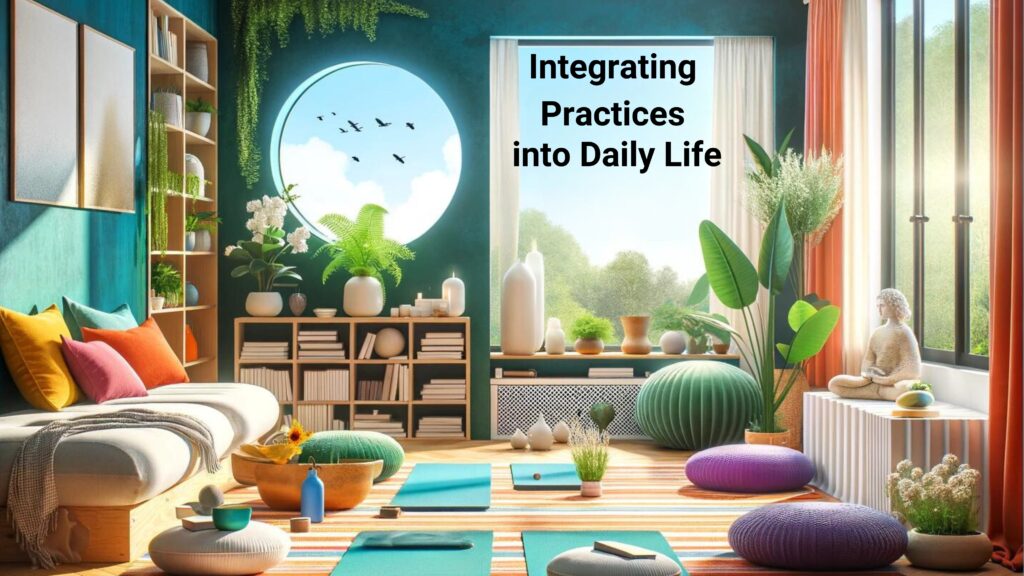
Lifestyle Integration: Practical Guides
Yoga and Meditation: A Beginner’s Guide
Starting your yoga and meditation journey requires understanding the fundamentals: finding a quiet space, choosing the right time, and practicing simple, comfortable poses. Beginners should begin with basic asanas and short meditation periods before gradually expanding their practice. Investing in a good mat and possibly a few guided sessions can greatly improve the first experience, making the practices more accessible and enjoyable.
This article discusses the importance of nutrition and diet for effective yoga and meditation practices.
The addition of proper nutrition can significantly improve the benefits of yoga and meditation. A diet rich in natural, whole foods promotes not only physical health but also mental clarity and emotional balance. Foods high in antioxidants and omega-3 fatty acids, such as berries, nuts, and leafy greens, are especially beneficial because they promote inflammation reduction and improved brain function, both of which are essential for effective meditation and yoga.
Creating a conducive environment for yoga and meditation at home
Creating a dedicated space for yoga and meditation can significantly improve the effectiveness of your practice. This area should be clean, clutter-free, and serene, with elements that promote peace like soft lighting, soothing colors, and few distractions. Plants, inspirational images, or a dedicated altar can all help to improve the spiritual atmosphere and make the practice more enjoyable.
Integrating Yoga and Meditation into Your Daily Routine
Incorporating yoga and meditation into our daily lives can be difficult given our hectic schedules, but even short sessions can be extremely beneficial. Begin by setting aside a specific time each day, perhaps in the morning or evening, for a quick 15-minute workout. Gradually, these practices become ingrained in daily life, improving overall health and productivity.
Advanced Yoga and Meditation Techniques for Experienced Practitioners
For those who understand the fundamentals, exploring advanced techniques can provide deeper insights and greater benefits. Pranayama (breath control), kriyas (cleansing practices), and advanced meditation methods like Vipassana or Zen can all have a transformative effect. Engaging with a knowledgeable instructor or attending workshops can help you safely explore these advanced practices.
Online resources and communities for Yoga and Meditation
The internet is a wealth of information for those looking to improve their yoga and meditation practices. Practitioners can find communities that provide support, advice, and companionship in a variety of formats, including detailed blogs, online classes, forums, and social media groups. These resources are invaluable for anyone looking to expand their knowledge or connect with like-minded people.
Ecotherapy and nature meditation
Practicing yoga and meditation in nature, also known as eco-therapy, takes advantage of the outdoors’ inherent healing power. Whether you’re practicing asanas in a park, meditating under the stars, or walking meditations in the woods, nature can significantly boost the benefits of your practice, improving mindfulness and reducing stress more effectively than indoor environments.
Yoga and Meditation’s Community and Social Implications
Yoga and meditation are not only personal practices but also shared experiences. Participating in group classes, workshops, and retreats can boost motivation and foster a sense of community. These social interactions can be especially beneficial, providing a network that promotes personal growth and collective well-being while reinforcing the communal spirit of yoga and meditation practices.
- An Introduction to Yoga and Meditation
- Yoga and Meditation: Definitions and Key Concepts
- Yoga and Meditation's Historical Origins
- The philosophical foundations of yoga and meditation practices
- Yoga and meditation are becoming increasingly popular worldwide.
- Yoga and Meditation: Key Differences and Synergies
- The Science of Yoga and Meditation: Understanding the Benefits
- Debunking Myths about Yoga and Meditation
- Yoga and Meditation: One Day in the Life of a Practitioner
- The physical and psychological benefits of yoga and meditation
- Anatomy of a Yoga Pose: How Yoga and Meditation Affect the Body
- Breathing techniques for yoga and meditation
- Alignment and Posture: The Basis for Effective Yoga and Meditation
- The effects of yoga and meditation on anxiety and depression
- Mindfulness is the psychological core of yoga and meditation.
- The intersection of yoga, meditation, and modern psychology
- Yoga and meditation are part of the rehabilitation programs.
- Emotional regulation through yoga and meditation
- Yoga and Meditation: Spiritual and Cultural Aspects
- Exploring the Spiritual Journey with Yoga and Meditation
- Yoga and meditation's spiritual goals are connection and unity.
- Yoga and Meditation have cultural implications.
- The intersection of yoga, meditation, and major world religions
- Yoga and Meditation: Chakras and Energy Flow
- The yoga and meditation practices of renowned spiritual leaders
- Ethical and philosophical concerns with commercial yoga and meditation
- Yoga and Meditation Retreats: An Escape to Find Inner Peace
- Lifestyle Integration: Practical Guides
- Yoga and Meditation: A Beginner's Guide
- This article discusses the importance of nutrition and diet for effective yoga and meditation practices.
- Creating a conducive environment for yoga and meditation at home
- Integrating Yoga and Meditation into Your Daily Routine
- Advanced Yoga and Meditation Techniques for Experienced Practitioners
- Online resources and communities for Yoga and Meditation
- Ecotherapy and nature meditation
- Yoga and Meditation's Community and Social Implications
- Demographic Specifications and Accessibility
- Yoga and Meditation for Specific Demographics
- Adaptive Yoga and Meditation: Tailoring Practices to Every Body Type
- From flexibility to strength: Yoga and meditation for physical health
- Preventing and managing injuries in yoga and meditation practices
- The importance of physical space in yoga and meditation practices
- This article discusses legal issues and certification for yoga and meditation instructors.
- Yoga for Seniors, Professionals, and Other Target Populations
- How to Maintain Motivation and Consistency in Your Yoga and Meditation Practice
- Future Trends and Global Movements
- Innovations in Yoga and Meditation Practice
- Using Technology in Yoga and Meditation
- The increasing use of yoga and meditation in healthcare
- Global Movements and Campaigns for Yoga and Meditation
- Economic Impact of the Yoga and Meditation Industry
- Challenges and Criticisms for the Yoga and Meditation Community
- Predictions for the future of yoga and meditation
- How Yoga and Meditation Are Changing Modern Lifestyles
- Step-by-Step Guide to Yoga and Meditation: Achieve Ultimate Peace Today
- Step 1: Understand the Basics.
- Step 2: Prepare your space.
- Step 3: Select the Right Time
- Step 4: Start with basic postures.
- Step 5: Use breathing techniques.
- Step 6: Transition to Meditation.
- Step 7: Practice regularly.
- Step 8: Deepen your practice.
- Step 9: Practice mindfulness daily.
- Step ten: Join a community.
- Frequently Asked Questions: Yoga and Meditation—Unlocking Ultimate Peace Today
- 1. What are the main benefits of combining yoga and meditation?
- 2. How long should I practice yoga and meditation every day to see results?
- 3. Do I need any special equipment to start practicing yoga and meditation?
- 4. Do yoga and meditation help with anxiety and depression?
- 5. What is the best time of day for yoga and meditation?
- 6. Are there different types of yoga and meditation that are appropriate for beginners?
- 7. How do I keep my yoga and meditation sessions interesting?
- 8. What should I do if I have difficulty quieting my mind during meditation?
- 9. Are yoga and meditation safe for everyone?
- 10. How do yoga and meditation improve overall well-being?
- Conclusion
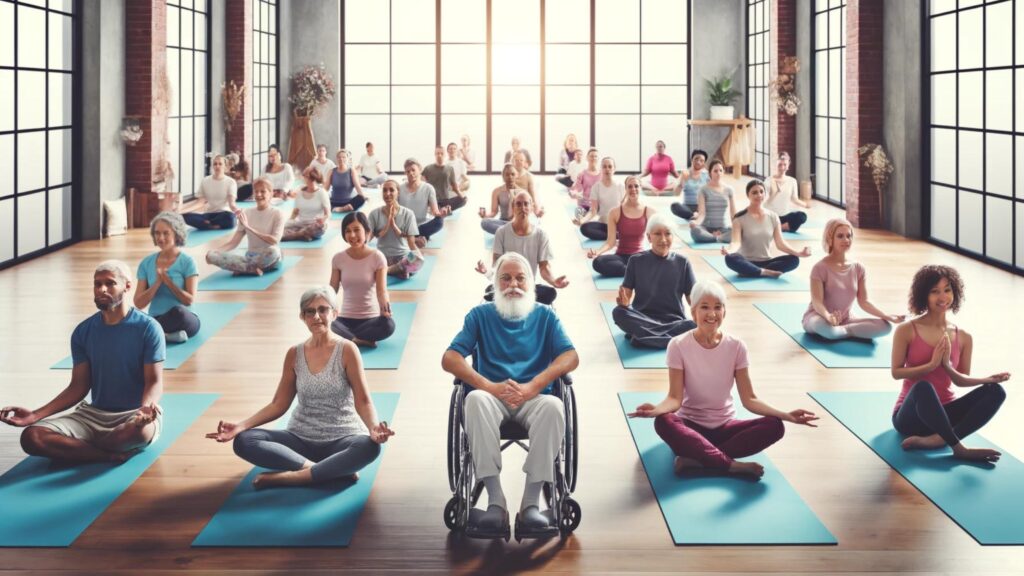
Demographic Specifications and Accessibility
Yoga and Meditation for Specific Demographics
Yoga and meditation transcend age, gender, and physical ability, providing tailored approaches that address the unique needs of various demographic groups. Yoga can help children improve their concentration and emotional regulation; working adults reduce stress and increase productivity; and the elderly improve their mobility and cognitive function. Each demographic can find a yoga style that fits their lifestyle, making these ancient practices widely accessible and beneficial.
Adaptive Yoga and Meditation: Tailoring Practices to Every Body Type
Adaptive yoga and meditation offer personalized approaches to helping people with physical limitations or disabilities. These practices emphasize modifications and the use of props to make yoga accessible to anyone, regardless of physical ability. Instructors trained in adaptive yoga focus on their students’ abilities, ensuring that each person can enjoy the benefits of yoga and meditation in a safe and comfortable environment.
From flexibility to strength: Yoga and meditation for physical health
Yoga takes a holistic approach to physical health, improving flexibility, strength, balance, and cardiovascular function. Yoga’s various postures and breathing techniques help to tone and strengthen muscles while also improving the respiratory system and increasing overall stamina. Meditation adds to these benefits by lowering stress and improving mental clarity, resulting in a healthier body and mind.
Preventing and managing injuries in yoga and meditation practices
While yoga is generally safe, incorrect postures can cause injuries. Practitioners must learn proper alignment and listen to their bodies to avoid strain. To avoid injuries, yoga instructors should emphasize gradual progression and proper form. Regular practice, under appropriate supervision, reduces the risk of injury and ensures that yoga remains a safe and healthy activity for people of all physical abilities.
The importance of physical space in yoga and meditation practices
The environment in which people practice yoga and meditation has a significant impact on their ability to relax and focus. A dedicated, peaceful environment free of distractions and noise enhances the practice’s effectiveness. To promote deep meditation and effective yoga practice, the physical space should be comfortable, with adequate ventilation, natural light, and minimalistic decor.
This article discusses legal issues and certification for yoga and meditation instructors.
As yoga and meditation become more popular, the need for certified and knowledgeable instructors has grown. Certification ensures that instructors are well-versed in both the physical and philosophical aspects of yoga, prepared to deal with health issues, and aware of their legal responsibilities. Proper certification also instills trust in students, ensuring that their instructor meets established standards of knowledge and professionalism in yoga practice.
Yoga for Seniors, Professionals, and Other Target Populations
Yoga and meditation programs can be tailored to the needs of specific groups, such as seniors who would benefit from gentler, chair-based yoga or professionals who would prefer short, invigorating sessions to counteract sedentary office life. By addressing the specific challenges and needs of these groups, we can make yoga and meditation more relevant and beneficial for everyone.
How to Maintain Motivation and Consistency in Your Yoga and Meditation Practice
To stay motivated in yoga and meditation, set realistic goals, practice regularly, and keep routines varied and enjoyable. Joining a community or group, taking workshops, and setting personal goals can all help keep you motivated. Reflecting on the positive changes in one’s physical and mental state can help to strengthen one’s commitment to these practices, allowing them to become an integral part of daily life.
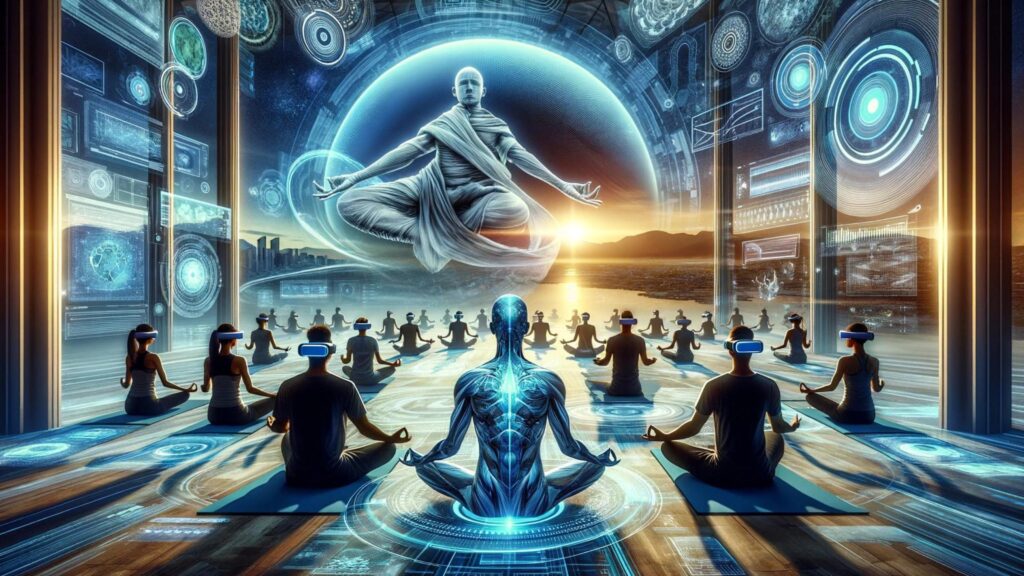
Future Trends and Global Movements
Innovations in Yoga and Meditation Practice
Yoga and meditation practices evolve alongside the world, with new innovations increasing their appeal and effectiveness. Hybrid yoga styles that combine traditional asanas with modern fitness trends, such as aerial yoga and aqua yoga, are growing in popularity and accessibility. Meditation is also undergoing transformations, with the inclusion of sound baths and biofeedback techniques that deepen the practice and make the benefits more tangible.
Using Technology in Yoga and Meditation
Technology is significantly altering the practice of yoga and meditation. Mobile apps provide guided sessions for meditation and yoga, making these practices more accessible to a global audience. Another frontier is virtual reality (VR), which provides immersive meditation environments that transport practitioners to serene landscapes, deepening their meditation experience through sensory engagement.
The increasing use of yoga and meditation in healthcare
People increasingly view yoga and meditation as essential components of holistic healthcare. Hospitals and clinics are incorporating these practices into treatment plans for a variety of conditions, including chronic pain management and mental health disorders. A growing body of research supports the therapeutic benefits of these practices, demonstrating their efficacy in improving quality of life while lowering healthcare costs.
Global Movements and Campaigns for Yoga and Meditation
Yoga and meditation have become the focus of global movements and campaigns, with events such as International Yoga Day promoting global health, harmony, and peace. These campaigns are critical in raising awareness about the benefits of yoga and meditation, thereby encouraging more people to incorporate these practices into their everyday lives.
Economic Impact of the Yoga and Meditation Industry
The yoga and meditation industry is booming, with significant economic benefits worldwide. With an increase in demand for yoga instructors, wellness retreats, and meditation apps, the industry is playing an important role in the wellness economy, creating jobs and opportunities for economic growth. Related products like eco-friendly yoga mats and apparel are growing, demonstrating its influence.
Challenges and Criticisms for the Yoga and Meditation Community
Yoga and meditation, despite their popularity, face challenges and criticism. The community is concerned about the commercialization of these practices, cultural appropriation, and the dilution of traditional methods. Addressing these concerns sensitively and in accordance with ethical practices is critical to the long-term viability of yoga and meditation as respected disciplines.
Predictions for the future of yoga and meditation
The future of yoga and meditation appears bright, with a focus on personalization and inclusivity. Advances in technology and a better understanding of human physiology are likely to result in more tailored and effective practices that can be incorporated into daily life. Furthermore, we expect yoga and meditation to play an even larger role in global wellness strategies as society becomes more aware of the importance of mental health.
How Yoga and Meditation Are Changing Modern Lifestyles
Modern lifestyles are increasingly incorporating yoga and meditation, influencing everything from corporate wellness programs to personal daily routines. They promote a balanced lifestyle by encouraging people to incorporate mindfulness and physical activity into their hectic schedules, thereby improving overall health and productivity. Incorporating these practices is changing the way we approach health and wellness in the modern world, demonstrating that ancient wisdom can have a significant impact on modern life.
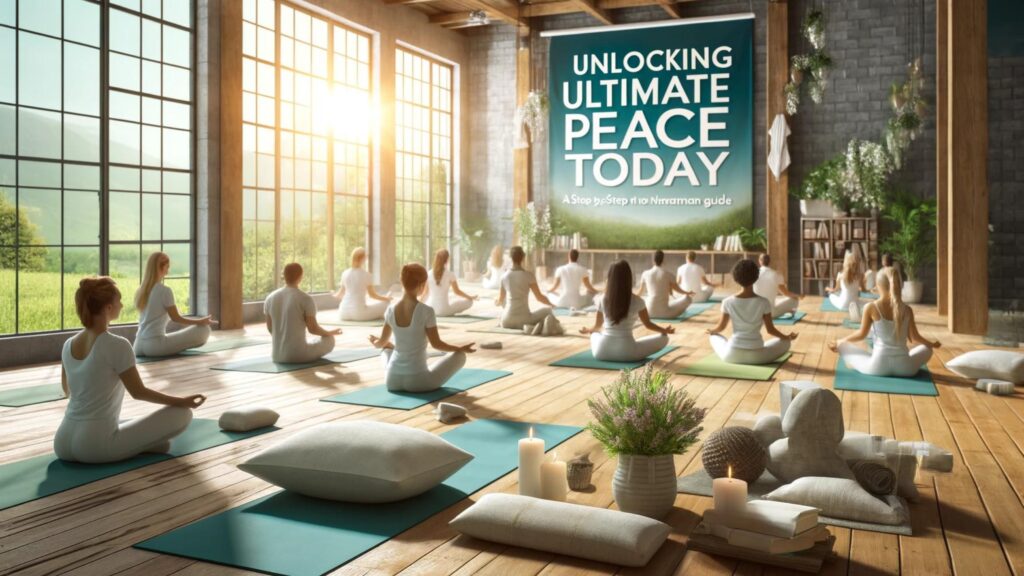
Step-by-Step Guide to Yoga and Meditation: Achieve Ultimate Peace Today
Unlocking Ultimate Peace: A Beginner’s Guide to Yoga and Meditation
Step 1: Understand the Basics.
Objective: Understand the fundamental concepts of yoga and meditation.
Yoga combines physical postures (asanas), breathing techniques (pranayama), and meditation to promote overall well-being.
Meditation focuses on developing a deep state of relaxation and mental clarity through focused attention techniques.
Step 2: Prepare your space.
Objective: Create an environment conducive to practice.
Choose a quiet, comfortable environment with few distractions.
For comfort, use a yoga mat, cushions, and a blanket.
Ensure that the area is clean and has adequate ventilation.
Step 3: Select the Right Time
Objective: Determine the optimal time for your sessions to maximize benefits.
Most people prefer to start their days in the early morning because it sets a positive tone.
Make sure your stomach is empty before beginning yoga practices; wait at least two hours after eating.
Step 4: Start with basic postures.
Objective: Gently introduce your body to yoga.
Begin with simple asanas such as Mountain Pose, Child Pose, and Cat-Cow Stretch.
Maintain proper alignment and breathe naturally.
Step 5: Use breathing techniques.
Objective: Use controlled breathing to improve your yoga practice.
Practice Pranayama, such as Ujjayi (Ocean Breath), to relax your mind and regulate your body’s energy flow.
Step 6: Transition to Meditation.
Goal: Begin meditation after a light yoga session.
Sit comfortably on the floor or in a chair.
Begin with a quick 5-minute session focusing on your breath or a simple mantra.
Step 7: Practice regularly.
Create a routine to incorporate yoga and meditation into your life
Practice yoga for at least 20 to 30 minutes every day, then meditate for 10 to 15 minutes.n.
Keep a practice journal to document your progress and reflect on your experiences.
Step 8: Deepen your practice.
Objective: broaden your knowledge and techniques.
Attend workshops or classes to learn new yoga and meditation techniques.
Experiment with guided meditations and different types of yoga, such as Yin or Kundalini.
Step 9: Practice mindfulness daily.
Goal: Incorporate mindfulness into daily activities.
Practice being mindful while eating, walking, or conversing.
Use mindfulness to relieve stress and improve your overall well-being.
Step ten: Join a community.
Connect with others to stay motivated and gain new perspectives.
Join local or online yoga and meditation groups.
Share your experiences and tips with the community to encourage growth and support.
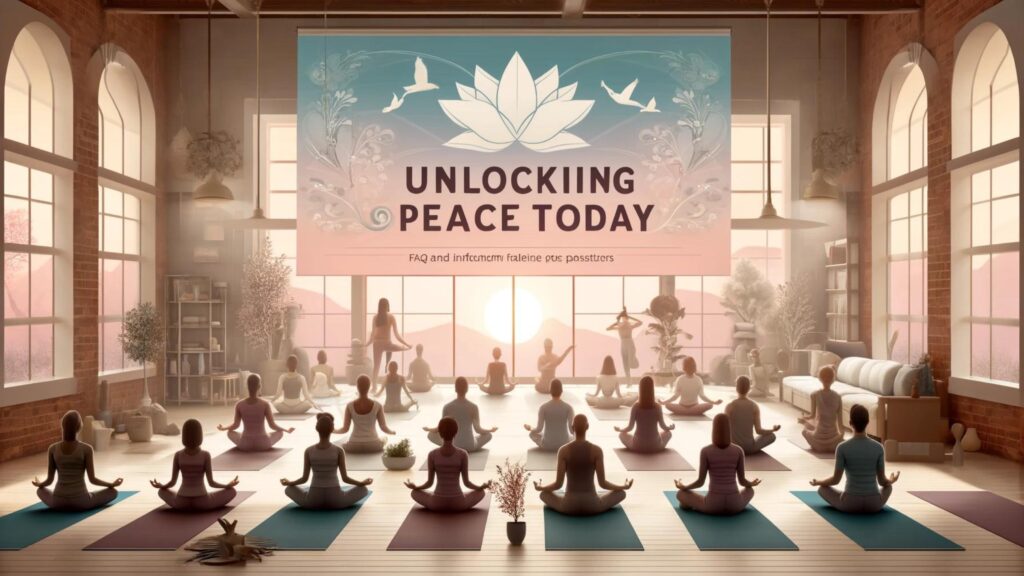
Frequently Asked Questions: Yoga and Meditation—Unlocking Ultimate Peace Today
1. What are the main benefits of combining yoga and meditation?
Combining yoga and meditation improves physical flexibility, reduces stress, increases concentration, and promotes a deeper sense of peace. Practicing both can result in improved overall health and a more balanced lifestyle.
2. How long should I practice yoga and meditation every day to see results?
Even a brief daily practice can be useful. To see positive results, commit to at least 20 minutes of yoga and 10 minutes of meditation per day.
3. Do I need any special equipment to start practicing yoga and meditation?
A yoga mat is necessary for comfort and support when practicing basic yoga. You can meditate anywhere you can sit quietly, but cushions or a comfortable chair might be helpful.
4. Do yoga and meditation help with anxiety and depression?
Yes, numerous studies have shown that yoga and meditation can significantly reduce symptoms of anxiety and depression by lowering stress and improving mood.
5. What is the best time of day for yoga and meditation?
The best time depends on your schedule, but many people prefer mornings because they set a positive tone for the day. Evening practices can also aid in relaxation before bedtime.
6. Are there different types of yoga and meditation that are appropriate for beginners?
Yes, yoga styles such as Hatha and Iyengar are ideal for beginners because of their slower pace and emphasis on alignment. Guided meditations and mindfulness meditations are good places to start when practicing meditation.
7. How do I keep my yoga and meditation sessions interesting?
Experiment with different styles, learn new poses or meditation techniques, and incorporate yoga workshops or retreats into your routine.
8. What should I do if I have difficulty quieting my mind during meditation?
It is normal for beginners to struggle with a preoccupied mind. Try guided meditations, concentrate on your breathing, or use mindfulness techniques to gently redirect your attention when it wanders.
9. Are yoga and meditation safe for everyone?
Most people can safely practice yoga and meditation. Those with specific health conditions, on the other hand, should consult a healthcare provider or a trained instructor before making any modifications.
10. How do yoga and meditation improve overall well-being?
Yoga benefits physical health by increasing flexibility, strength, and posture, whereas meditation benefits mental health by increasing mental clarity, lowering stress, and promoting emotional health. They work together to maintain a healthy and balanced lifestyle.
Conclusion
Yoga and meditation are vital paths to peace and self-discovery. Adopting these practices can significantly improve your physical health and mental clarity, guiding you to a more peaceful and centered life in today’s fast-paced world. Learn more about how to transform your life by reading our in-depth articles on Yoga and Meditation. Discover tips, techniques, and personal stories to help you on your journey to inner peace.

